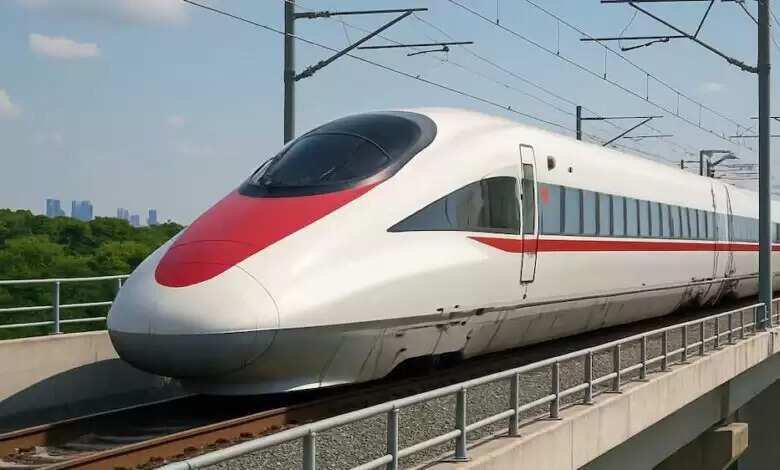300 km of vialect work in bullet train project, platform will be 26 meters below ground

Mumbai
With the construction of a 40 -meter long girder in Surat, Gujarat, the construction of a 300 km long bridge of the bullet train project has been completed. The National High Speed Rail Corporation (NHSRCL) gave this information. NHSRCL said that out of 300 km long superstructure, 257 km bridge has been constructed from full span launching method.
What is the work status right now
According to NHSRCL, 14 bridges have been built on rivers so far under the bullet train project. The 37 km long bridge is built with span by span technology. A 0.9 km long steel bridge has been built and a 1.2 km long PSC bridge has been built. Also, station building has been constructed in 2.7 km. Apart from 300 kilometers, foundation work in 401 km and girder casting in 326 km has been completed. The total length of the bullet train project is 508 km. The construction work of the bullet train project has increased. Especially with full span launching method, there has been remarkable development.
The Railway Minister posted a video on the social media platform X. In this post, he told that how many km long track of this bullet train project has been prepared. He wrote in the post, 'The 300 km of the wire was completed.' This means that the 300 km of the bullet train has now been built on the pillars. Wiracle means a bridge -like structure on which the train will run.
How much work of Mumbai station is completed?
The Mumbai Bullet Train Station is being built at Bandra Kurla Complex. This station will be under the ground. 76 percent excavation work has been completed here. According to a report, 14.2 lakh cubic meters have been excavated. A total of 18.7 lakh cubic meters of soil is to be removed from there. That is, about half the work of extracting soil has been completed.
Concrete lab on site
Three batching plants of 120 cum/HR capacity have been set up on the site. Batching plant means the place where concrete (mixture of cement, sand, ballast) is made. The batching plant also has an ice plant and chiller plant. They help control the temperature of the concrete. The concrete dries quickly in summer. Therefore, it is necessary to keep it cool.
The site also has a modern concrete lab. There are facilities such as water permeability and rapid chloride paintration test. These tests reveal the quality of concrete. All concrete tests are on the site itself. Some samples are also sent to good labs.
What will happen in the station?
The platform will be about 26 meters below the ground.
It is as deep as a 10 -storey building.
The station will have three floors: platform, concourse (waiting room) and service floors.
Excavation work is being done up to a depth of about 32 meters (100 feet).
The station will have six platforms. Each platform will be about 415 meters long. This is enough for a 16 -coach bullet train. The station will also be connected by metro and road.
The station will have two entry/exit points. This will make it easier for people to move to and go to the station.
Skylite will be
A skylight is also made for natural light. Skylight will bring sunlight in the station during the day. This will save electricity and the station will also look beautiful. Bullet train project is a major achievement for India. This will intensify traffic in the country.
Indigenous technology and equipment are being used
27 casting yards have been created for the construction of the bullet train project. Seven workshops have been set up for Steel Bridge, three of which have been established in Gujarat and one in Uttar Pradesh, Tamil Nadu, West Bengal and Maharashtra. The agency said that more than three lakh voice blockers have been installed on the bridge. Under the bullet train project, connectivity is being made by road and rail route of bullet train stations so that the passengers do not face any kind of trouble. Indigenous technology and equipment are being used in the bullet train project. This project is also showcasing increasing capabilities in India's railway technology.
The total cost of the Mumbai Ahmedabad rail project is around Rs 1.08 lakh crore, out of which the central government will pay Rs 10 thousand crore and the Government of Gujarat and Maharashtra will pay five thousand crores. At the same time, the rest of Japan government will give in the form of debt.
